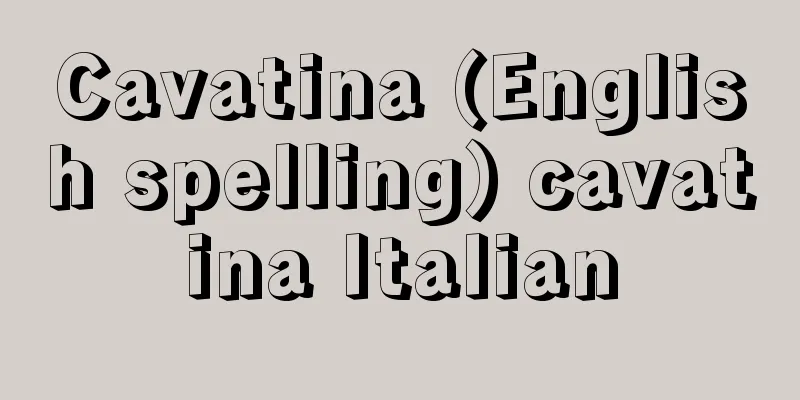Kiriuji - Kiriuji

|
…They appear twice a year, in spring and autumn. The larvae dig tunnels underground and eat away at the shoots and roots of plants, causing damage, so they are commonly called kirimaguji and are known as pests of rice and wheat. In rice, in addition to direct feeding damage, they cause floating seedlings and fallen seedlings, and inhibit seed germination. … *Some of the terminology explanations that mention "Kiriuji" are listed below. Source | Heibonsha World Encyclopedia 2nd Edition | Information |
|
…年2回春と秋に発生する。幼虫は地下にトンネルを掘って植物の芽や根を食い切って荒らすので,俗にキリウジと呼ばれイネやムギの害虫として知られる。イネでは直接の食害のほか〈浮き苗〉や〈転倒苗〉ができたり種子の発芽阻害を起こす。… ※「キリウジ」について言及している用語解説の一部を掲載しています。 出典|株式会社平凡社世界大百科事典 第2版について | 情報 |
>>: Kiriwina [island] - Kiriwina
Recommend
Gain - Retoku
1. To obtain profits. Also, profits. "To purs...
khāqān (English spelling) khaqan
...This means a person who was entrusted with sec...
Market Failure
This refers to a situation in which economically ...
Daijoji Temple
[1] [noun] A temple founded and operated according...
Chaldeans - Chaldeans (English spelling)
One of the Semitic nomads who founded the Neo-Baby...
tray
…Today, the word “plate” mainly refers to ceramic...
Colour paper
Color paper is a multi-layered printing paper for ...
Pneumatic Tire & Booth Cycle Agency
…[Yoshihisa Kitai]. … *Some of the terminology us...
Carnelian
...White or pale gray chalcedony is the main raw ...
Adequate stimulus
…A sensory system is made up of receptors, pathwa...
Guide - Douin
〘noun〙① To lead; to give directions. ※Engishiki (9...
Insect seller - Mushiuri
In the Edo period, insect sellers with various ins...
Platypleura kuroiwae (English spelling) Platypleurakuroiwae
…Cicada [Masami Hayashi]. . … *Some of the termin...
Satellite Attack Satellite - Satellite Attack Satellite
... refers to an artificial satellite system deve...
Marcus Annaeus Lucanus
Roman poet. Born in Cordoba, Spain. Grandson of S...









